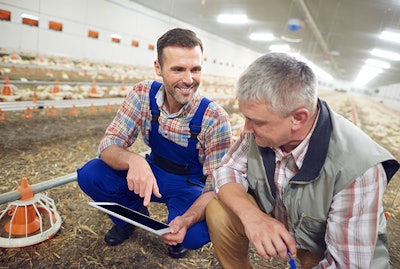
An international group of almost 50 scientists created eight action points to help farmers, consumers, food companies and policy makers transition to a more efficient and sustainable supply chain using new technologies.
The action points, published in the journal Nature Food, are:
- Build trust: Farmers, consumers and food companies need to work together to develop a set of shared values about different food system outcomes. “Besides technological development, a constructive societal dialogue is critical to establish clear transition pathways towards future sustainable food systems,” Hannah van Zanten of Wageningen University & Research, one of the authors of the paper, said in a statement.
- Open mindsets: Agricultural stakeholders need to be ready and willing to learn about the possible advantages and disadvantages of each new technology.
- Open dialogue: Innovators need to be aware of changing consumer mind sets and other issues in the spotlight, such as meat alternatives and antibiotic use, in order to ultimately gain acceptance of new technologies.
- Changes to policies and regulations: Expectations about future policies are essential before public and private investments in new technologies can occur.
- Market incentives: Financial incentives encourage new innovators and entrepreneurs to launch technologies into the marketplace.
- Prevent indirect, undesirable effects: Policy and investment frameworks should be carefully evaluated to avoid any unintended consequences or undesirable effects that could prevent consumer acceptance.
- Stable funding: Transformative change can sometimes be unpredictable, so stable funding is needed to test new technologies under real-world conditions.
- Develop pathways for innovation in agriculture: Transition pathways include transition costs, methods for identifying winners and losers, aspects of institutional reframing and plans for a system that encourages innovation and other new ideas.
The group also identified 75 emerging technologies, including 3D printing, vertical agriculture and feed for livestock made from insects, that show the greatest promise for innovating agriculture and food production.
To learn more about the transition of innovative technologies into commercial applications for the benefit of the poultry industry, make plans to attend the annual Poultry Tech Summit. The conference, presented by WATT Global Media, is a global collaboration networking event where biology, engineering and business converge.
Like what you just read? Sign up now for free to receive the Poultry Future Newsletter.

















